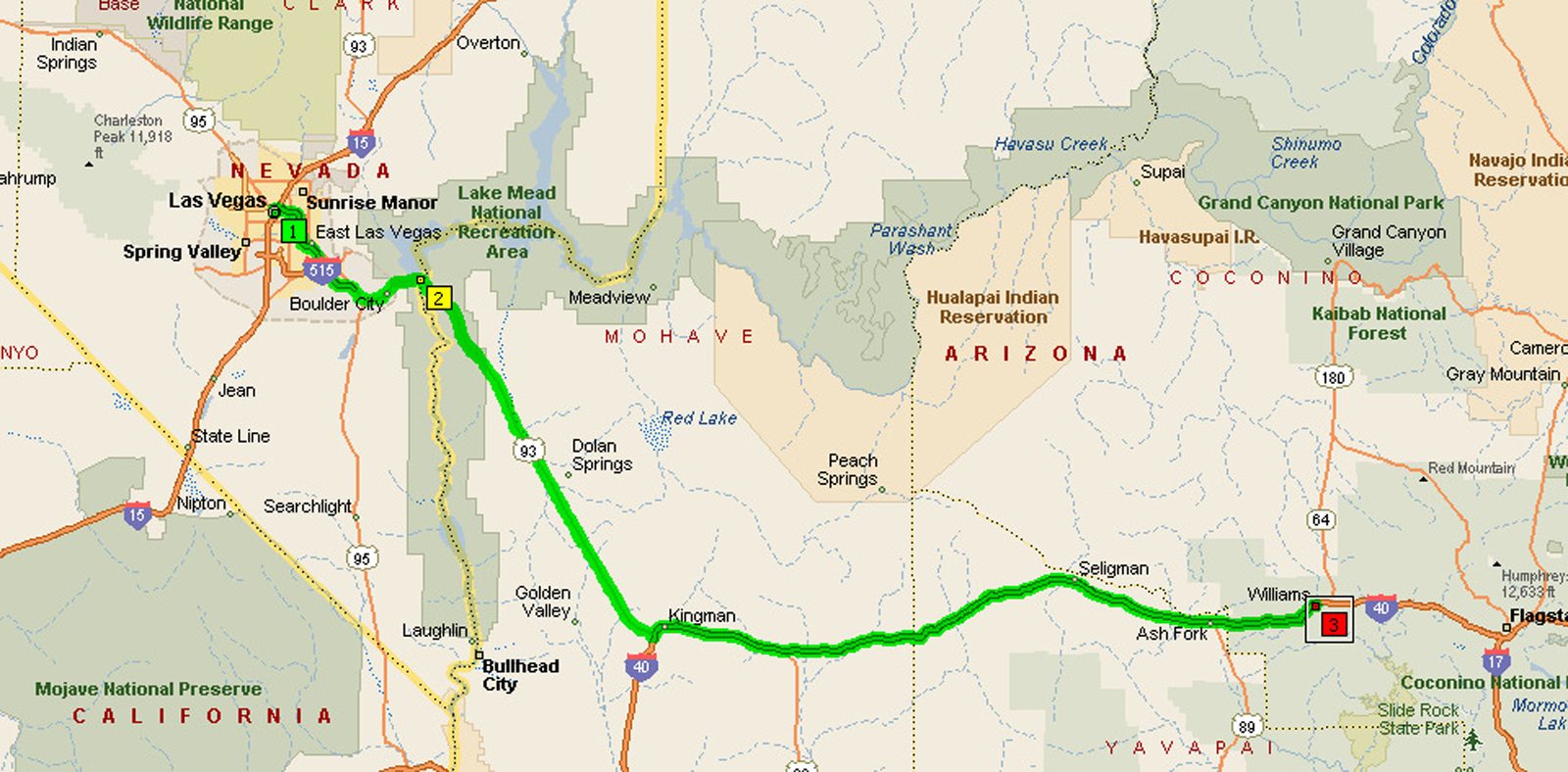|
|
 |
|
|
 |
 |
|
|
|
|
|
|
|
|
Las Vegas, NV - Williams, AZ
|
|
|

|
|
|
We stayed in in the morning to relax from the moving, to work on my syllabi ... and to avoid the heat of Las Vegas. By noon, we went to another casino ... and at this point I was a bit tired of LV. The dry heat is worse than the moist heat of Manaus, and without the lights, the city looked like an oversized Hollywood studio. We went to Rio's ... a casino that supposedly was inspired by Rio's carnival ... for lunch. No churrasco, no caipirinha. I wanted to sue them. But the buffet was pretty good, and we overate. Again.
After lunch, a brief stop at Luxor. It is my favorite casino, until now. It doesn't try to be pseudo-chic or sophisticated ... it is unabashedly kitsch, and proud of it. The pyramid is great ... I just wonder how much energy they need for the air conditioning.
|
|
|
|
We left Las Vegas at 2:30, awfully hot. Roberto thought about going to a Manet exhibit at the Belaggio ... air conditioning was as much an actraction as the paintings.. Frankly, I would rather go to the Hoover Dam. And there we went. The dam is impressive, really impressive. Sign of the times: after 9-11, they have two security checks, one on the road, about two or three miles from the dam, and another one at the visitor center. They have a great oral history project and also some info on this very peculiar environment that is a desert and a river together. I was very interested in the more technical details. I had visited Itaipu Dam in Brazil (the second largest in the world) fifteen years ago and remained astonished by how much work and planning goes on a dam. I was very curious to find out how the Hoover Dam engineers had diverted the river during the works. In Brazil, engineers created a channel, an alternative course for the Paraguay River, but I couldn't see how they could have done it in a canyon. It wasn't easy: in 1933 America, the engineers the responsible dig four large tunnels in the rock, thru which the water flew while they built the dam. And they worked fast, really fast. I imagine that they were always fearing that flash floods could overcome the temporary barrier and ruin the whole project. It was also interesting to see how the Hoover Dam was connected to a larger history of the US, i.e., how workers came from all the country, chastised by the Great Depression, desperately looking for jobs. Sometimes they would apply under six different names, increasing their chances of being hired; their co-workers would find out many years later that they were working with assumed names. Finally, I loved the final exhibit, a very enthusiastic narrative on the success of the Hoover Dam. It was a recorded text, not very interesting, but very revealing of the logic behind the dam. It was first written in the 1940s and slightly updated over the years. The voice was what you would expect of a radio anchor of the Voice of America in the 1950s, but the language was all Progressive Era. On the one hand, the 'untamed,' 'uncontrolled' river; on the other hand, the marvel of engineering, transforming nature in a mighty resource, and increasing the benefic uses. Oh, well, it DOES make sense if you spent the last five years working on a dissertation on engineering in the twentieth century.
|
|
|
|
We left the Hoover Dam at 5:00 PM, and the worst of the heat was over, but not completely. The roads from Hoover Dam to Kingman and then to Williams is spectacular. It is a continuation of the Mojave Desert, but we are at the top of the canyon, and the mountains are closer. The signs of civilization are less evident ... and there is less litter on the road. The late afternoon light makes everything soft and pink ... I really loved it. We arrived at William at 8:00, but it was quite dark by then. We should have changed the time, according to my map, but it seems that people here in Arizona are using he same time that in Nevada. I will never understand this thing.
Next stop: Grand Canyon.
Lise
|
|
|
|
